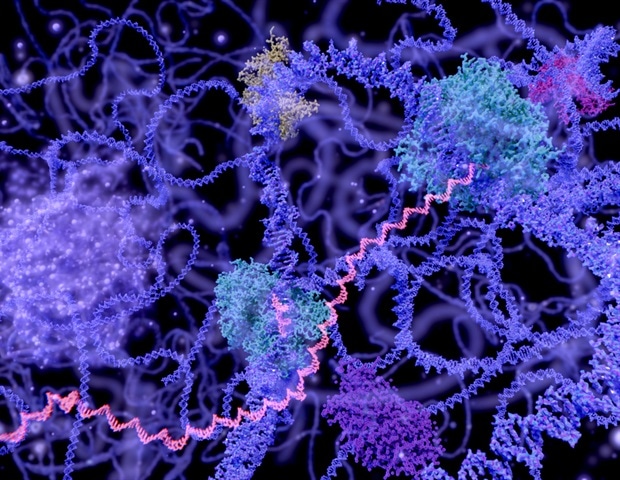
Sure RNA molecules within the nerve cells within the mind final a life time with out being renewed. Neuroscientists from Friedrich-Alexander-Universität Erlangen-Nürnberg (FAU) have now demonstrated that that is the case along with researchers from Germany, Austria and the USA. RNAs are usually short-lived molecules which can be always reconstructed to regulate to environmental circumstances. With their findings which have now been revealed within the journal Science, the analysis group hopes to decipher the advanced getting older strategy of the mind and achieve a greater understanding of associated degenerative illnesses.
Most cells within the human physique are often renewed, thereby retaining their vitality. Nevertheless, there are exceptions: the guts, the pancreas and the mind encompass cells that don’t renew all through the entire lifespan, and but nonetheless have to stay in full working order.
Growing old neurons are an essential danger issue for neurodegenerative diseases comparable to Alzheimer’s. A primary understanding of the getting older course of and which key parts are concerned in sustaining cell perform is essential for efficient therapy ideas:”
Prof. Dr. Tomohisa Toda, Professor of Neural Epigenomics at FAU and on the Max Planck Heart for Physics and Medication in Erlangen
In a joint examine carried out along with neuroscientists from Dresden, La Jolla (USA) and Klosterneuburg (Austria), the working group led by Toda has now recognized a key element of mind getting older: the researchers have been in a position to exhibit for the primary time that sure forms of ribonucleic acid (RNA) that defend genetic materials exist simply so long as the neurons themselves. “That is stunning, as not like DNA, which as a rule by no means adjustments, most RNA molecules are extraordinarily short-lived and are always being exchanged,” Toda explains.
So as to decide the life span of the RNA molecules, the Toda group labored along with the crew from Prof. Dr. Martin Hetzer, a cell biologist on the Institute of Science and Expertise Austria (ISTA). “We succeeded in marking the RNAs with fluorescent molecules and monitoring their lifespan in mice mind cells,” explains Tomohisa Toda, who has distinctive experience in epigenetics and neurobiology and who was awarded an ERC Consolidator Grant for his analysis in 2023. “We have been even in a position to establish the marked long-lived RNAs in two yr outdated animals, and never simply of their neurons, but in addition in somatic grownup neural stem cells within the mind.”
As well as, the researchers found that the long-lived RNAs, that they known as LL-RNA for brief, are typically situated within the cells’ nuclei, carefully linked to chromatin, a fancy of DNA and proteins that types chromosomes. This means that LL-RNA play a key position in regulating chromatin. So as to verify this speculation, the crew diminished the focus of LL-RNA in an in-vitro experiment with grownup neural stem cell fashions, with the end result that the integrity of the chromatin was strongly impaired.
“We’re satisfied that LL-RNAs play an essential position within the long-term regulation of genome stability and subsequently within the life-long conservation of nerve cells,” explains Tomohisa Toda. “Future analysis initiatives ought to give a deeper perception into the biophysical mechanisms behind the long-term conservation of LL-RNAs. We wish to discover out extra about their organic perform in chromatin regulation and what impact getting older has on all these mechanisms.”
Supply:
Journal reference:
Zocher, S., et al. (2024) Lifelong persistence of nuclear RNAs within the mouse mind. Science. doi.org/10.1126/science.adf3481.
